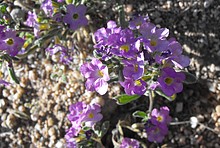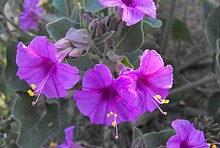Home PageAbout MindatThe Mindat ManualHistory of MindatCopyright StatusWho We AreContact UsAdvertise on Mindat
Donate to MindatCorporate SponsorshipSponsor a PageSponsored PagesMindat AdvertisersAdvertise on Mindat
Learning CenterWhat is a mineral?The most common minerals on earthInformation for EducatorsMindat ArticlesThe ElementsThe Rock H. Currier Digital LibraryGeologic Time
Minerals by PropertiesMinerals by ChemistryAdvanced Locality SearchRandom MineralRandom LocalitySearch by minIDLocalities Near MeSearch ArticlesSearch GlossaryMore Search Options
The Mindat ManualAdd a New PhotoRate PhotosLocality Edit ReportCoordinate Completion ReportAdd Glossary Item
Mining CompaniesStatisticsUsersMineral MuseumsClubs & OrganizationsMineral Shows & EventsThe Mindat DirectoryDevice SettingsThe Mineral Quiz
Photo SearchPhoto GalleriesSearch by ColorNew Photos TodayNew Photos YesterdayMembers' Photo GalleriesPast Photo of the Day GalleryPhotography
╳Discussions
💬 Home🔎 Search📅 LatestGroups
EducationOpen discussion area.Fakes & FraudsOpen discussion area.Field CollectingOpen discussion area.FossilsOpen discussion area.Gems and GemologyOpen discussion area.GeneralOpen discussion area.How to ContributeOpen discussion area.Identity HelpOpen discussion area.Improving Mindat.orgOpen discussion area.LocalitiesOpen discussion area.Lost and Stolen SpecimensOpen discussion area.MarketplaceOpen discussion area.MeteoritesOpen discussion area.Mindat ProductsOpen discussion area.Mineral ExchangesOpen discussion area.Mineral PhotographyOpen discussion area.Mineral ShowsOpen discussion area.Mineralogical ClassificationOpen discussion area.Mineralogy CourseOpen discussion area.MineralsOpen discussion area.Minerals and MuseumsOpen discussion area.PhotosOpen discussion area.Techniques for CollectorsOpen discussion area.The Rock H. Currier Digital LibraryOpen discussion area.UV MineralsOpen discussion area.Recent Images in Discussions
Identity HelpWhat is vertine quartz?

11th Nov 2017 17:42 UTCTheodore Hansen Theo
11th Nov 2017 18:21 UTCPaul De Bondt Manager
11th Nov 2017 19:03 UTCLuca Baralis Expert

11th Nov 2017 19:26 UTCWayne Corwin

11th Nov 2017 21:52 UTCTheodore Hansen Theo
this quartz name "vertine" is from 1987! thats how how old the piece is! so is this actually "lemon" quartz that once was called vertine? idk! but it is gem grade material whatever it is!
12th Nov 2017 01:35 UTCOwen Lewis
Can you put up some test results and other observations, Theo? SG? Optic character? Pleochroism? Hardness? Fracture? Cleavage? UV LW/SW fluorescence? Crystal form (with another view straight down the long axis? Just give us the facts, sir. Just give us the facts....
12th Nov 2017 01:56 UTCReiner Mielke Expert

12th Nov 2017 03:08 UTCJamison K. Brizendine 🌟 Expert
I agree with Reiner, a specific gravity test should solve this quickly...

12th Nov 2017 05:34 UTCTheodore Hansen Theo
also it does not fluorece under long wave but doesnt seem to either for short wave....hmmm...any ideas? in the 2nd pic you can see the top black thin band area)
another thought was what if it is space glass? like Libyan desert glass? that basically quartz grains melted isnt it? and it can have banding right? I just dont know! but I am doing much research as we speak!
12th Nov 2017 06:00 UTCKeith Compton 🌟 Manager

12th Nov 2017 06:42 UTCTheodore Hansen Theo
12th Nov 2017 08:03 UTCKevin Hean
It looks a lot like "Lemon Quartz". Lucas is correct Vert means Green.
Its normal Quartz that has been treated with heat and irradiation. Pretty common in the Gem world at the moment,

12th Nov 2017 09:07 UTCTheodore Hansen Theo
12th Nov 2017 15:45 UTCDavid Von Bargen Manager
1994 AGTA Spectrum Awards™ Winners
Pendant Enhancer: 10 Ct "Geo Pyramid" Cut Vertine with with .10 Ct brilliant Diamond set in 14K green gold
http://www.agta.org/awards/1994-winners.html
14th Nov 2017 00:20 UTCOwen Lewis
14th Nov 2017 01:52 UTCReiner Mielke Expert
14th Nov 2017 03:44 UTCOwen Lewis
1. Minor substitution of the Si by Fe and gamma irradiation causes a violetish colour, such quartz then being called amethyst. If amethyst is heated at 400-450 deg C, the violet colour fades to a medium yellow, sometimes called pale citrine. Further heating at 500-550 deg C deepens the colour to an orangeish or light brownish yellow, the colour most often referred to as citrine. If this is further heated at over 600 deg C, the quartz reverts to being colourles or slightly milky.
2. If there is minor Si substitution by Al rather than Fe and such quartz is gamma irradiated, one gets smoky quartz rather than amethyst. Heating SQ gently in the range 140-280 deg C fades the smoky to a greenish-yellow, sometimes called lemon quartz or else just yellow quartz. As is clearly seen in the example offered by the U of T, material that is some way along the colour transition but not yet complete has been called
In nature it is probable that most samples quantitavely analysed will be found to contain chromophore-acting levels of both Fe and Al and thus, in natural colour formation, it will be common that the end result is some mix of both the 1. and 2. processes outlined above.
14th Nov 2017 14:47 UTCReiner Mielke Expert
14th Nov 2017 16:48 UTCOwen Lewis
-------------------------------------------------------
> Other than the name what is the difference between
> vertine quartz and citrine?
As described in 1. and 2. of my last post. If you want it in one sentence:
The difference is whether Fe or Al is the quartz chromophore and the temperature to which the material is heated.
14th Nov 2017 18:35 UTCReiner Mielke Expert
You used the word vertite in 2. Didn't realize that vertite and vertine were the same. However in my opinion it makes things more complicated than necessary if you attach the type of chromophore and heating history to the definition rather than just go by the color. Furthermore with this definition we still do not know if the specimen in question is citrine or vertine. I guess the best that can be done is to call it colored quartz. By the way do gemologists distinguish between citrine that has been produced by heat treatment and natural citrine?
14th Nov 2017 19:36 UTCOwen Lewis
Groan... My bad... as the link makes quite clear, it is vertine that is being discussed. Now corrected. Thanks
As for the rest, you asked what the difference was and I told you. If you consider knowing what the cause of a colour is has no interest to you, fine, that's up to you. For myself and quite a few others it's both interesting and useful knowledge - but each to their own.
As to your final question let me first ask a couple of you whilst my fingers rest :-) How do *you* believe that "natural" citrine is formed? Or does it not matter to you since its simply "coloured quartz"?

14th Nov 2017 20:12 UTCAlfredo Petrov Manager

15th Nov 2017 03:36 UTCDoug Daniels
15th Nov 2017 14:33 UTCOwen Lewis
Doug, if you see any green then you can't be looking at citrine. If, as well as some green, one sees some yellow and also brownish smoky colours then - so it seems - the label 'vertine' fits, with the imprimatures of the American Gem Trade Association and the University of Texas behind it. As said at the start of this thread, I had never heard of the word 'vertine' until this last week. It seems to be an American addition to the lexicon that has failed to find general acceptance (I couldn't find it in any of the standard reference sources, Merkin or otherwise. Never mind... even stranger things have been known to come out of wabbit-land.




Mindat.org is an outreach project of the Hudson Institute of Mineralogy, a 501(c)(3) not-for-profit organization.
Copyright © mindat.org and the Hudson Institute of Mineralogy 1993-2024, except where stated. Most political location boundaries are © OpenStreetMap contributors. Mindat.org relies on the contributions of thousands of members and supporters. Founded in 2000 by Jolyon Ralph.
Privacy Policy - Terms & Conditions - Contact Us / DMCA issues - Report a bug/vulnerability Current server date and time: April 19, 2024 00:42:43
Copyright © mindat.org and the Hudson Institute of Mineralogy 1993-2024, except where stated. Most political location boundaries are © OpenStreetMap contributors. Mindat.org relies on the contributions of thousands of members and supporters. Founded in 2000 by Jolyon Ralph.
Privacy Policy - Terms & Conditions - Contact Us / DMCA issues - Report a bug/vulnerability Current server date and time: April 19, 2024 00:42:43














